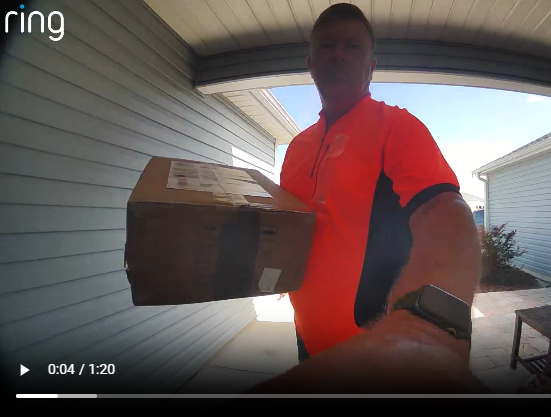Robot Lawn Mowers 101
- Scott Satori
- 7 days ago
- 4 min read
Why They’re Ready for Your Yard (and How I Can Help)
Executive Summary
Today’s robot mowers don’t bump around like a “drunk Roomba.” The newest models use GPS + RTK + onboard vision to mow in clean back-and-forth patterns, keep your grass healthier, and save you hours every month. If you already mow your Villages lawn (for cost or quality), there are sub-$1,000 options that can fully take over the task. And yes—sharing a robot with neighbors is often practical.
I’ve spent 7 years installing and consulting on robot mowers—residential and commercial—and I can help you choose the right model, install it cleanly, and tune the map so you get great results from day one.
Contact: 321-300-6369 • sales@villageautomation.com • villageautomation.com
Using my affiliate links (below) costs you nothing and helps me keep these guides going. Thank you!
Will a robot mower work for me? (start here)
Capacity = grass area, not lot size. Manufacturer ratings (⅛ acre, ¼ acre, etc.) refer to the actual mowable grass, not your property line.
Yard size sweet spot: Under ¼ acre of grass is ideal for sub-$1K units; larger or multi-yard shares can use higher-capacity models.
Obstacles: Trees/beds/paths are fine with good mapping.
Signal: I test GPS/RTK reception and plan routes under canopy or near roofs/fences.
Zones/Access: Multiple areas are OK—virtual “no-mow” beds and “connectors” keep it tidy.
Noise: Extremely quiet—no “five different crews at five different times.”
Neighbor share: If lawns are contiguous, one mower can handle several homes. I map zones and schedules so each yard gets a turn.
Why robot-cut lawns look better
Healthier turf: Robots cut smaller amounts, more often (2–3×/week). Tiny clippings decompose → less stress, less thatch.
Less rutting & debris: Robots weigh ~15 lb vs. ~350 lb commercial mower + 200 lb operator → fewer ruts and lower risk of flying debris.
Edge/trim/blow shrinks: With constant maintenance, most folks edge/trim/blow every 10–14 days, not every weekend.
Heat reality check: The Villages averages ~120 days/year over 90°F. A robot is like having someone push your EGO twice a week—without the heat.
The evolution (like robot vacuums, but outdoors)
Gen 1: Buried perimeter wire + random pattern—works, but fiddly installs/repairs.
Gen 2: Better app mapping/navigation.
Gen 3 (now): Wireless GPS + RTK (centimeter-level) + vision → pattern mowing (straight stripes), faster setup, consistent coverage.
Leaders to know (and where I recommend starting)
My go-to for most Villages yards: Segway Navimow
i105N (⅛ acre grass) → https://amzn.to/42rsCbI
i110N (¼ acre grass) → https://amzn.to/4711kdC
Neighbor share options:
X315 (~0.5 acre grass)—often 3–4 Villages homes
X330 (~0.7–0.8 acre grass)—you + up to ~6 contiguous neighbors (layout permitting)
Why I favor Navimow: strong GPS/RTK performance, pattern stripes that look “human,” solid mapping tools, and—importantly—support. It’s the combo I’ve had the most consistent success with across Villages-style lots.
Other brands (fair mention, honest take)
Husqvarna Automower — established reputation; many wired models, improving wireless options.
Worx Landroid / Robomow — good feature/value mixes for certain layouts.
Mammotion — innovative mapping and AWD options; models include:
YUKA Mini 700H (~0.35 acre grass) → https://amzn.to/3KZiLDT
LUBA Mini AWD 800H (¼ acre grass) → https://amzn.to/4hfUdCT
My bias (transparent): I can install and support Mammotion, but their support has been weaker in my experience, and affiliate programs are less favorable. If you’re deciding today, I’ll typically recommend Navimow first for reliability + post-sale support. If you love a specific Mammotion feature, we’ll review your yard and expectations together before buying.
Still pushing a mower? For context, a premium walk-behind like the EGO self-propelled is here: https://amzn.to/3VQ474a. If you’re doing that weekly, a robot likely pays back in time and hassle—especially in summer heat.
Share a mower with neighbors (how it works)
If you and neighbors have connecting lawns (from 2-6 Villages homes):
I survey true grass area across homes.
We pick capacity (e.g., X315 ~0.5 acre or X330 ~0.7–0.8 acre).
I map zones, virtual boundaries, and schedule rotations.
Everyone gets stripes; you split the investment.
Pro landscaping tip: If you’re re-doing beds or curbing, we can place borders and mower-width gaps so the robot eliminates most trimming. Many clients end up with only occasional edging.
What robots don’t do (yet)
Edge, trim, blow: still a short manual touch (usually 10–15 minutes every 10–14 days).
Jungle rescue: Keep a regular schedule; robots aren’t brush hogs.
What I handle on installs (this is where the value is)
Site survey of mowable grass, slopes, shade, satellite visibility.
Dock placement for power, signal, and safe pathing.
Mapping & tuning: no-mow beds, crossing paths, stripe direction, schedules, cut heights.
Edge plan (minimize trimming) + tips for beds/curbing.
Safety & reliability: lift/tilt safety, theft deterrents (PIN/geo), rain handling, firmware/app setup.
Paper instructions—a one-pager for the garage; easy “what if” steps.
Cut-height cheat sheet (common Villages grasses):
St. Augustine (south): 3–4 in
Zoysia (north): ~2 in
Bermuda: shorter (often 1–1.5 in, depending on variety/condition)
I’ll set schedules and cut heights for your specific turf and season.
Contact: 321-300-6369 • sales@villageautomation.com • villageautomation.com
Disclosure: This article contains affiliate links. If you buy through these links, I may earn a small commission at no additional cost to you. This helps fund the tutorials, checklists, and ongoing updates on this site.




Comments